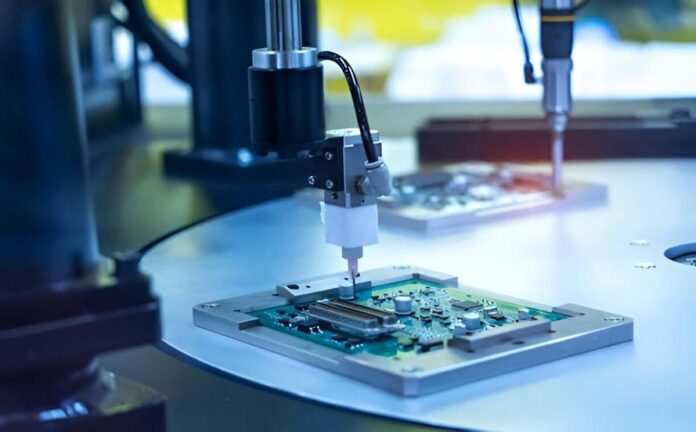A backplane PCB is a crucial component in advanced electronic systems that require multiple connections between circuit boards. Unlike standard PCBs, which connect components on a single board, backplane PCBs act as a central hub — interconnecting several daughter boards or plug-in cards through high-speed signal paths. This structure provides stability, scalability, and performance efficiency for complex systems such as telecommunications, aerospace, servers, and data centers.
What Is a Backplane PCB?
A backplane PCB (Printed Circuit Board) serves as the foundation for connecting multiple printed boards or modules into a unified system. It functions as a communication highway, allowing signals and power to flow seamlessly between connected boards. These PCBs are designed to handle high data transfer rates, robust mechanical strength, and long-term reliability in demanding environments.
Backplanes can be passive or active. Passive backplanes simply provide interconnections, while active backplanes include active components such as buffers, drivers, and amplifiers to enhance signal quality and speed.
Structure and Design of a Backplane PCB
A well-engineered backplane PCB typically features a multi-layered design that supports dense routing and controlled impedance for high-speed data signals. The number of layers can range from 8 to over 50, depending on the system’s complexity.
Key structural elements include:
- Signal Layers: Carry high-speed data and control signals between daughter boards.
- Power and Ground Planes: Provide stable voltage levels and reduce noise.
- Differential Pairs: Maintain signal integrity for fast data transmission.
- Via Structures: Used to connect different layers, often implemented as blind, buried, or micro vias for precision routing.
Advanced materials such as high-Tg FR-4, Rogers, or polyimide laminates are commonly used to ensure excellent thermal and electrical performance.
Applications of Backplane PCBs
A backplane PCB is used wherever there’s a need to interconnect multiple boards in a reliable and high-speed manner. Major application areas include:
- Telecommunication Equipment: Used in switches, routers, and network servers for efficient data routing.
- Data Centers: Powering high-speed interconnections between processors and storage modules.
- Aerospace and Defense Systems: Ensuring robust performance under vibration and temperature extremes.
- Industrial Automation: Providing stable connections in PLCs and control units.
- Medical Electronics: Enabling modular designs for imaging and diagnostic equipment.
Benefits of Using Backplane PCBs
Choosing a high-quality backplane PCB offers numerous advantages that enhance system performance and reliability:
- Scalability: Supports multiple boards or expansion modules.
- High Signal Integrity: Minimizes noise and crosstalk in high-frequency operations.
- Compact System Design: Reduces cabling and improves internal organization.
- Mechanical Stability: Provides rigid support for interconnected boards.
- Simplified Maintenance: Easy insertion and removal of plug-in cards for upgrades or servicing.
Manufacturing Considerations for Backplane PCBs
Producing a backplane PCB requires advanced manufacturing expertise due to the high layer count, precise hole drilling, and strict signal performance requirements.
Key manufacturing aspects include:
1. Controlled Impedance and Signal Management
To ensure optimal performance, the board must maintain precise impedance control across all signal traces. Any variation can lead to data errors or signal reflection.
2. Material Selection
High-speed applications require materials with low dielectric loss and high thermal stability. Manufacturers often use FR-4, Rogers, or Nelco laminates based on the project’s electrical demands.
3. Layer Stack-Up Design
An optimized layer stack is essential for balancing power delivery and signal routing. Designers use simulation tools to reduce EMI and achieve uniform signal propagation.
4. Drilling and Plating
Due to the board thickness, backplane PCBs require advanced drilling techniques such as laser or sequential lamination. Proper plating ensures strong interconnections and long-term reliability.
5. Quality Testing
Before shipment, the backplane undergoes electrical tests, thermal cycling, and mechanical stress analysis to ensure compliance with industry standards like IPC-6012 and MIL-PRF-31032.
Why Backplane PCBs Are Critical for Modern Electronics
As technology advances, the demand for higher bandwidth, modular design, and compact systems continues to rise. A backplane PCB fulfills these needs by allowing efficient data exchange, reducing wiring complexity, and offering greater design flexibility. In industries where reliability and speed are non-negotiable, backplanes provide the structural and electrical foundation for innovation.
Partner with a Reliable Backplane PCB Supplier
When developing complex systems that depend on speed and precision, choosing the right backplane PCB supplier is essential. An experienced supplier can deliver customized solutions, support high-layer designs, and maintain strict quality control standards throughout production. Partnering with a professional backplane PCB supplier ensures consistent performance, durability, and compatibility with your system architecture — empowering your project with reliable connectivity and long-term stability.

